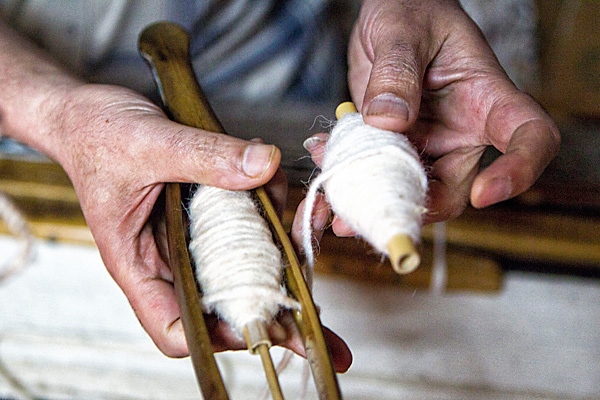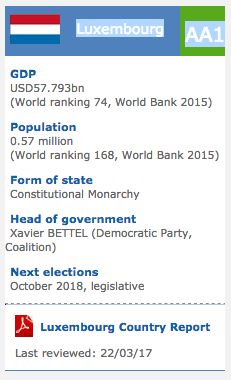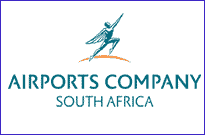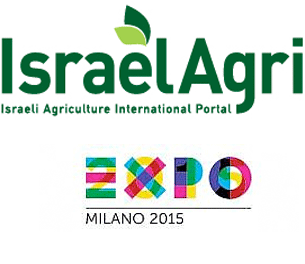Morocco: Morocco Art / Culture Profile
2012/01/25

Al Maghrib, the Arabic name for Morocco, means "far west" or "where the sun sets." When the Arabs first arrived in northern Africa in the seventh century C.E. , Morocco was believed to be the westernmost point in the world. At that time, the Maghrib region included the countries that are today Morocco, Algeria, and Tunisia. The countries of the Maghrib share many common historical and cultural features. All have indigenous Berber populations and a strong Islamic base. Similarly, all were colonized by France, and remain largely bilingual, with both French and Arabic being spoken. Although European influence in Morocco is strong,
it is still a country of distinctly Arabic tradition. The vast difference between the crude life on the streets and the hospitality and intimacy found in the home reflect the duality that is deeply ingrained in Moroccan culture. But one aspect of Moroccan life that is distinctly unified is religion. The king has declared that all citizens are born Sunni Muslims, and Islam is an important part of everyday ritual life. The Moroccan government is a constitutional monarchy, with a very powerful king. It is this mix of European and Arab influence, loyalty to the king and a strong Islamic base, that creates the uniquely Moroccan identity.
Linguistic Affiliation
Moroccan Arabic is the official language of Morocco. It is spoken by roughly three-quarters of the population and differs slightly from modern standard Arabic and other dialects in grammar and vocabulary. Although half a century has passed since the French colonial period in Morocco ended, French remains the official language in business, government, and diplomacy. Before the Arabs spread their language and culture across northern Africa, Berber dialects were spoken in Algeria, Morocco, and Tunisia. Although the dialects can still be heard in some rural areas, the Berber linguistic tradition is oral rather than literary, and there is no formal alphabet or standard written form of the language. There are three main Berber dialects in Morocco.
Rifan is the dialect spoken in the Rif Mountains as well as in some rural areas of eastern Morocco along the Algerian border. In the High and Middle Atlas region the dialect spoken has many names; it may be called Amazigh, Zaran, or Tamazight. In the southwestern oasis and the Anti-Atlas region, the dialect may be called Soussi, Celha, Tashelhait, or Chleuh. Spanish is widely spoken in the northern parts of the country, and English is commonly spoken to international tourists. Multi-lingualism exists to such a degree that Moroccans may switch from one language to another midsentence.
Symbolism
Perhaps the most famous city in Morocco is Casablanca. Port activities by the French turned this city into the economic capital of the country in the early 1900s. In 1942 the city was the site of an Allied invasion, and in 1943 it was the host city for a conference between Franklin Delano Roosevelt and Winston Churchill. But it was the 1943 Hollywood classic film Casablanca, starring Ingrid Bergman and Humphrey Bogart, that transformed the city into an international symbol of romance and wartime struggle. The black-and-white film was the 1943 Academy Award winner for best picture. Other films with quintessential images of Morocco include Lawrence of Arabia and The Jewel of the Nile. A more eastern symbol of Morocco is the Hassan II Mosque, built in Casablanca in 1993. It is one of the largest and most extravagant mosques in the Arab world.
Dating back to the Alaouite Dynasty in the seventeenth century, a red flag was used as a symbol of the Moroccan state. In Rabat and Salé the flag was raised every morning and lowered every evening. When the French took control in 1912, a five-pointed linear known as Solomon's seal was placed on the flag in order to distinguish the nation's flag from others. Because green is the traditional color of Islam, the star on the flag is green.
History and Ethnic Relations
Emergence of the Nation
The first people to have contact with the Berbers were probably the Phoenicians, who invaded northern Africa in the twelfth century B.C.E. The Phoenicians were essentially a maritime people who established trading posts and simple colonies along the northern coast. The Phoenician colonies were later taken over by the Carthaginians, and expanded as part of the Carthaginian Empire. In the second century B.C.E. , the city of Carthage fell to the Romans, and the African Mediterranean coast came under Roman dominance for roughly six hundred years. Following the decline of the Romans, the Vandals, Visigoths, and Byzantine Greeks successively set up their own empires.
Finally, in 682 C.E. , the Arabs invaded northwestern Africa, and the first Muslim Arab dynasty, the Idrisid, came to power. Pagan and Christian inhabitants of the land were converted to Islam during this period. For centuries to follow, Arab and Berber factions fought a bitter civil war over control of the land. By the fifteenth century, European powers had become aware of the trading and economic potential of their southern neighbor. Britain, Spain, Portugal, and France took turns controlling various coastal areas of Morocco. Finally, at the Conference of Algeciras in 1906, France was recognized as the dominant European power in the area. This conference also established the northernmost city, Tangier, as an international free port, under control of the Spanish.
In 1912, Moroccan Sultan Moulay Hafid signed the Treaty of Fez, establishing Morocco as a protectorate of France. The treaty outlined roughly the same borders that define the country today.
As early as the 1920s, an Islamic fundamentalist movement arose in Fez. The goal of the movement was to create a stronger form of Islam and a central Moroccan government. After World War II, the independence movement began to gain momentum. In 1944, Istiqlal, the Moroccan Independence Party, sent an Independence Manifesto to the sultan and French authorities requesting independence. The French responded by arresting several Istiqlal leaders, and deporting the Moroccan royal family to Madagascar in 1953.
The people reacted with violence toward French officials, and demanded the return of the king. In August 1955, Berber tribesmen attacked French troops in the village of Oued Zem, killing every French person in the town. Finally, in December 1956, the Moroccan sultan, Muhammad V, was taken to France where he signed a declaration promising to move the nation toward a democratic state with the establishment of a constitutional monarchy. During the same year, the Spanish signed an agreement to remove the international status of Tangier, making Morocco a completely independent and united nation.
National Identity
The civil war between the Arabs and the Berbers finally began to subside in the 1940s and 1950s. After World War II, the quest for independence from France unified the two groups behind a common cause, and the Arabs and Berbers began to share nationalistic feelings toward Morocco and its sultan. Widespread acceptance of Islam by both sides further strengthened the independence movement. The movement spread the idea that a stronger central government was needed to provide spiritual leadership to a Muslim population. In modern Morocco devotion to Islam and loyalty to the king are still cornerstones of national identity.
Ethnic Relations. Just south of Morocco lies a disputed territory known as the Western Sahara. The indigenous people that live inside the territory are the Saharawi. Because they are nomadic, their exact number is difficult to determine, although it is estimated to be around 250,000. Prior to the mid-1970s, Spain, Mauritania, and Morocco claimed ownership of all or part of the Western Sahara. In 1975, 350,000 Moroccan civilians backed by King Hassan II marched into the northern part of Western Sahara to claim the territory for Morocco. The massive demonstration is remembered as Green March Day. In an attempt to establish the Western Sahara as an independent nation, a guerilla group called the Polisario formed in 1973. The Polisario have historically received financial support from the Algerian government, which has economic interest in the valuable phosphates within the territory. In 1979, the Polisario convinced Mauritania to relinquish its claims on Western Sahara; Spain had already done the same. Morocco is now the only country that claims ownership of the territory. Since 1974 several United Nations referendums have been set to allow the Saharawi population to vote on whether they prefer independence or annexation to Morocco. Each time, the Moroccan government has found reason to postpone the vote, and the territory remains in dispute.
Urbanism, Architecture, and the Use of Space
The eclectic influence of many cultures is strikingly apparent in Moroccan architecture. Typical of all cities is the medina , a large walled area that encloses houses and shops. Medina structures with Arabic-style arches and crenellated walls are usually found in the oldest parts of town. Some buildings within the medina are centuries old, while others are relatively new. Units inside have a wide range of modernity in electricity, water, and sewage services. Other parts of town are constructed like French villages with European-style townhouses and modern plumbing.
Also found in every city are traditional Arab mosques, most of which are tall buildings with ornamental geometric patterns covering the doors and walls. In homes, there is a drastic difference between the inside and outside of the building, reflecting the differences Moroccans perceive between public and private life. The outside may be a neglected cement block with a simple door, while inside lie beautiful, ornately decorated rooms. The furniture in homes is usually floor level with plush pillows lining the walls. People come here to eat and lounge, and choose a decorating style that shows the relaxed privacy and intimacy only available in the home.
Ethnic groups and languages
Morocco is considered by some as an Arab-Berber country. Others insist on the Berber-African identity of Morocco. About 42% acknowledge a Berber identity, though a lot of additional have Berber ancestry. Berbers are identified primarily by language but as well by traditional customs and culture - such as the distinctive music and dances. Berbers don't identify themselves by blood ties. Berber language (As well called Amazigh) is not from now on officially recognized in Morocco, though French (the colonial language) is. Classical Arabic remains the only official language of Morocco and is used in limited socio-economic and cultural activities and written newspapers but it is never spoken between Moroccans.
Linguistically, Berber belongs to the Afro-Asiatic group, and has a lot of accents or variants. The three major accents used in Morocco are Tachelhit, Tamazight and Tarifit (As well called Thamazight by its speakers). Collectively, those Berber languages they are known as "Chelha" in Moroccan Arabic and as "Barbaria" in Classical Arabic used in the Middle East. The terms "Barbar" and "Chelha" are considered by most Berber activists as extremely offending and humiliating. They prefer the word Amazigh.
Tachelhit (sometimes known as "soussia" or "chelha") is spoken in south-west Morocco, in an area between Sidi Ifni in the south, Agadir in the north and Marrakech and the Draa/Sous valleys in the east. Tamazight is spoken in the Middle Atlas, between Taza, Khemisset, Azilal and Errachidia. Tarifit is spoken in the Rif area of northern Morocco in towns like Nador, Al Hoceima, Ajdir, Tangier and Taourirt, Larache and Taza.
Although Berbers were from now on converted to Islam, their ethnic and linguistic purity has remained. Hundreds of Amazigh (Berber) associations were created in the last few years. Newsstands and bookstores in amount the major cities are filled with new Amazigh magazines and other publications that provide articles about the Amazigh culture and art. The national owned TV station RTM (now TVM) has started broadcasting a daily 10-minute long news bulletin in the 3 Berber accents since the mid 90's. Berber activists are repetedly demanding a 50% share of broadcasting time in standardized Amazigh language on amount 5 national owned satellite channels TVM, 2M, 3, 4 and Laayoune TV. The national still refuses or ignores these demands.
Social Stratification
Classes and Castes.
A wide gap exists between the very rich and the very poor. A strong belief in fatalism, that things are meant to be exactly as they are, and the Islamic principal of giving to those in need, lends to the acceptance of social and economic inequality. At the top level of the class system exists the monarch and royal family, members of the government, and a group of very wealthy Moroccans who do not work. They are joined by wholesale merchants and the owners of large manufacturing, industrial, or international trading companies. The upper class often claims to be Arab, although there are as few pure Arabs as there are pure Berbers remaining. An upper middle and middle class is comprised of professionals, mostly educated in Europe. Another group, called Sherfa, are those who claim descent from the prophet Muhammad. Sherfa typically do not work, and those who have no inherited wealth live off the alms of others. A relatively new class, referred to as the Muhajerin, or emigrants, is comprised of nearly 2 million Moroccans who live and work abroad, in order to send their wages back to support their families in Morocco. Many of the Muhajerin are not likely to ever return to their native country. Berber farmers in the countryside have little access to the education and social climbing available to those in larger cities. Most remain poor and are looked down upon. Jews and other foreigners generally prosper, while sub-Saharan black Africans are often discriminated against.
Symbols of Social Stratification
The number of languages spoken and the proficiency acquired are primary identifiers of social class in Morocco. Well-spoken French is perceived as a characteristic of a refined, sophisticated individual. The inability to speak any French usually signifies a lack of education. Fluency in Arabic is accepted, and rather expected of any respectable individual, while those who speak only Berber dialects are looked down upon. Other symbols of status are headgear and clothing. Moroccans have occasion to wear both traditional and Western clothing, therefore it is not the style of the clothes, but rather the quality of what is being worn that symbolizes one's status.
For example, the jellaba, the traditional one-piece hooded garment worn by both men and women, comes in many varieties. Those of a higher class have theirs hand made by a tailor with intricate needlework and fine fabric. The jellaba is also available at corner shops at a much lower quality. Among the rural poor a knit cap is worn, which would never be placed on the head of an upper- or middle-class man. Turbans worn by Berber men are often white while those of Arab men are orange. A more traditional, perhaps ceremonial, hat is the fez, worn by older upper-class men. Women who wish to show that they are Islamic fundamentalist cover their heads to the hairline with a scarf or the hood of the jellaba when in public. Young women are increasingly challenging traditions such as this, some even daring to sit in public cafés and smoke cigarettes with uncovered heads.
Food Customs at Ceremonial Occasions
Moroccans are famous for their hospitality and proudly serve their guests as much food as they can afford. It is considered disgraceful to allow guests to leave a meal unsatisfied. A specialty dish commonly prepared for ceremonial occasions is pastilla, a layered pastry filled with pigeon, eggs, and nuts, topped with cinnamon and sugar. Another specialty dish is mechoui, a whole roasted lamb or calf, usually stuffed with couscous or other fillings. In Moroccan homes, families and their guests eat from a communal bowl, usually without utensils, while seated on the floor. Hearty Moroccan eating habits come to a halt during the thirty days of Ramadan, when every Islamic person in the country must fast from dawn until dusk. Moroccans seen eating or drinking during daylight hours in Ramadan may be arrested. During this time, every house prepares harira soup to be eaten as the first meal when the sun goes down. Late at night, a main meal with several dishes is served.
Traditional clothing
The traditional dress for men is called djellaba; a long, loose, hooded garment with full sleeves. For special occasions, men as well wear a red cap called tarbouche and mostly referred to as Fez. Nearly amount men wear babouches —- those soft leather slippers with no heel, often in yellow. A lot of women do as well but others wear high-heeled sandals, often in silver or gold tinsel.
The distinction is the djellabas has a hood, while a Kaftan does not. The women’s djellabas are mostly of bright colors with ornate patterns, stitching, or beading, while men wear djellabas in plainer, neutral colors. Women are strongly attached to their "Moroccan wardrobe", despite the financial costs involved. The production of such garments is relatively expensive, as most of the work is done by hand. Despite the costs involved most women purchase a minimum of new kaftan or "tk'chita" each year, normally for a special, social event, such as a religious festival or a wedding. Nowadays, it is an unwritten policy that Moroccan dress is worn at such events.
Domestic architecture
Dar, the name given to of the majority common types of domestic structures in Morocco, is a home found in a medina, or walled urban area of a city. Most Moroccan homes traditionally adhere to the Dar al-Islam, a series of tenets on Islamic domestic life. Dar exteriors are typically devoid of ornamentation and windows, except occasional small openings in secondary quarters, such as stairways and service areas. These piercing provide light and ventilation . Dars are typically composed of thick, high walls that protect inhabitants from thievery, animals, and other such hazards; however, they have a much additional symbolic price from an Arabic perspective. In this culture the exterior represents a place of work, while the interior represents a place of refuge. Thus, Moroccan interiors are often very lavish in decoration and craft.
Consistent with most Islamic architecture, dars are based around small open-air patios, surrounded by very tall thick walls, to block direct light and minimize heat.Intermediary triple-arched porticos lead to usually to symmetrically located rooms. These rooms have to be long and narrow, creating very vertical spaces, because the regional resources and construction technology typically only allow for joists that are usually less than thirteen feet.
Upon entering a dar, guests move through a zigzagging passageway that hides the central courtyard. The passageway opens to a staircase leading to an upstairs reception area called a dormiria, which often is the majority lavish room in the home adorned with decorative tilework, painted furniture, and piles of embroidered pillows and rugs. Additional affluent families as well have greenhouses and a second dormiria, accessible from a street-level staircase. Service quarters and stairways were always at the corners of the structures.
- Morocco News
-
- BOTSWANA: Children on the move from Africa do not first aim to go to Europe, new UNICEF study shows
- BOTSWANA: WHO lauds Africa’s progress in malaria, HIV control
- NIGERIA: Moroccan King Mohammed VI
- BOTSWANA: South Africa plays an active role in the AU
- BOTSWANA: Africa: How to Adapt to Beat Crippling Droughts
- BOTSWANA: Africa: Expanded Engagement for Caterpillar - Boosting Sales & Alleviating Poverty
- Trending Articles
-
- QATAR: Qatar focuses on preventive care in new national health strategy
- CHINA: Why China and Russia will be best frenemies forever
- TANZANIA: Acacia Mining aims resume dividend if Tanzania export ban ends
- EGYPT: Sudan: Egyptian FM to Visit Sudan Wednesday
- BOTSWANA: Africa: How to Adapt to Beat Crippling Droughts
- BENIN: Benin moves to save part of West Africa's last big wildlife refuge












